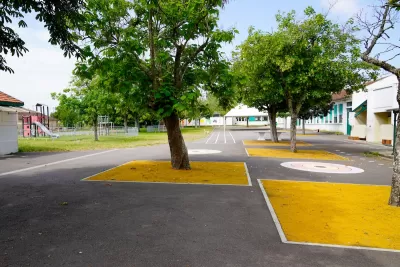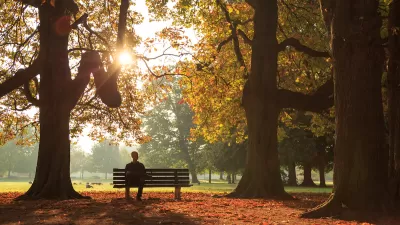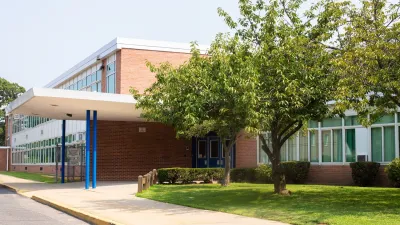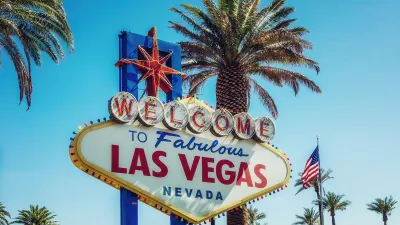More schools are transforming asphalt-covered playgrounds into shady oases that help reduce temperatures and absorb emissions.

In an article for La Voce di New York, Amelia Tricante describes how schools around the country are revamping their schoolyards to include more trees and plants, providing much-needed green space in urban areas.
As Tricante explains, “It isn’t merely about aesthetics; it’s part of a larger push to address the public health risks posed by extreme heat, especially in schools located in urban areas with limited green space.”
Asphalt, which blankets many schoolyards and playgrounds, retains heat and contributes to the urban heat island effect, driving up temperatures on surfaces and in the surrounding air. “Researchers have measured surface temperatures of up to 145 degrees Fahrenheit, putting children at risk of heat-related illnesses and burns. Even alternative surfaces like rubber and artificial turf, which many schools have turned to in recent years, can become unbearably hot.”
But tree planting and landscaping efforts cost money school districts often don’t have. In California, a state bond on November’s ballot could contribute to tree planting initiatives, while Los Angeles has pledged $500 million to schoolyard greening efforts. “In districts where resources are stretched thin, finding a balance between cooling the playgrounds and managing ongoing costs remains a difficult equation.”
FULL STORY: Confronted with Extreme Heat, U.S. Schools Are Greening the Asphalt Jungle

Planetizen Federal Action Tracker
A weekly monitor of how Trump’s orders and actions are impacting planners and planning in America.

Congressman Proposes Bill to Rename DC Metro “Trump Train”
The Make Autorail Great Again Act would withhold federal funding to the system until the Washington Metropolitan Area Transit Authority (WMATA), rebrands as the Washington Metropolitan Authority for Greater Access (WMAGA).

The Simple Legislative Tool Transforming Vacant Downtowns
In California, Michigan and Georgia, an easy win is bringing dollars — and delight — back to city centers.

The States Losing Rural Delivery Rooms at an Alarming Pace
In some states, as few as 9% of rural hospitals still deliver babies. As a result, rising pre-term births, no adequate pre-term care and harrowing close calls are a growing reality.

The Small South Asian Republic Going all in on EVs
Thanks to one simple policy change less than five years ago, 65% of new cars in this Himalayan country are now electric.

DC Backpedals on Bike Lane Protection, Swaps Barriers for Paint
Citing aesthetic concerns, the city is removing the concrete barriers and flexposts that once separated Arizona Avenue cyclists from motor vehicles.
Urban Design for Planners 1: Software Tools
This six-course series explores essential urban design concepts using open source software and equips planners with the tools they need to participate fully in the urban design process.
Planning for Universal Design
Learn the tools for implementing Universal Design in planning regulations.
Smith Gee Studio
City of Charlotte
City of Camden Redevelopment Agency
City of Astoria
Transportation Research & Education Center (TREC) at Portland State University
US High Speed Rail Association
City of Camden Redevelopment Agency
Municipality of Princeton (NJ)





























